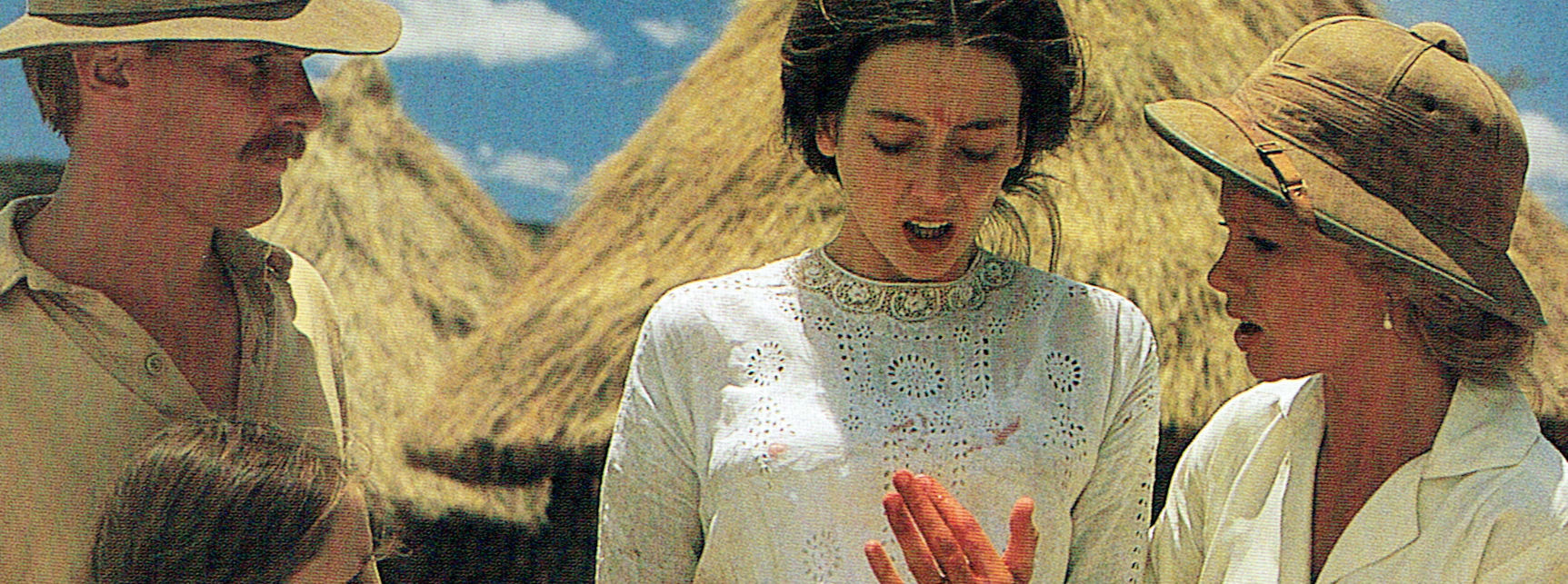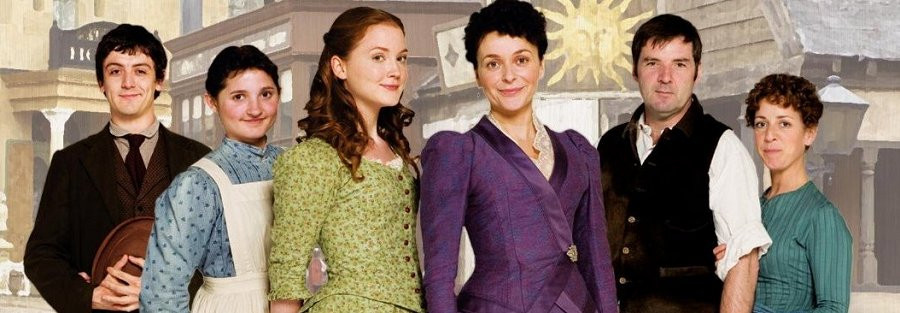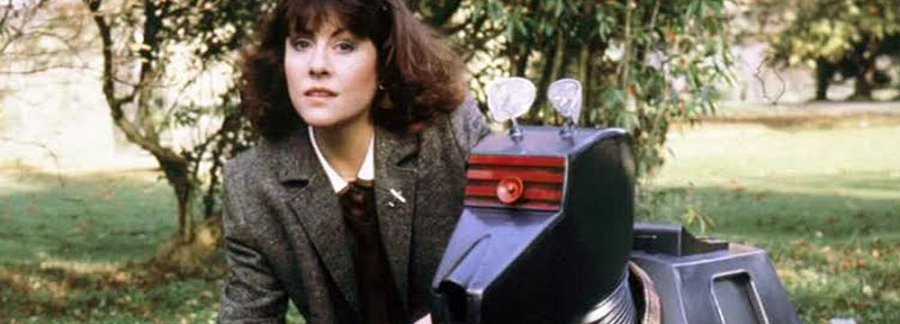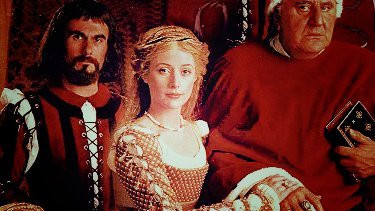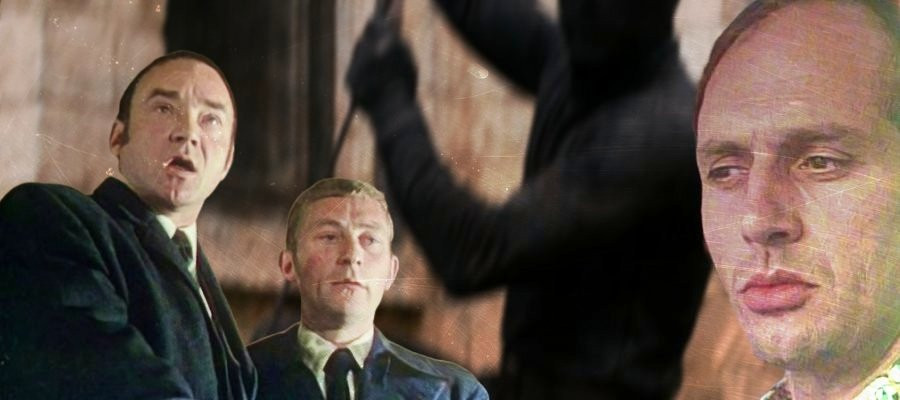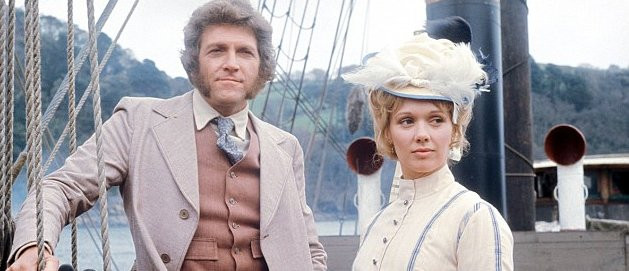
Fanny by Gaslight
1981 - United KingdomOn the Dark Side of the Streets
Fanny by Gaslight review by Marc Saul
Seemingly inspired by Fanny Hill, Fanny by Gaslight is the sad narrative of a young girl born to two lovers and brought up in the grimmest corner of Victorian London. Her early life as well as her adulthood is littered with pimps, prostitutes, alcoholics and connivers, yet she stands isolated from the moral rot encompassing her.
Her story begins in London, 1870. Young Fanny Hooper and Lucy Beckett are playing with a ball in the street when it falls into a cellar. Going to retrieve it, she discovers a wine-bar-cum-brothel called The Hopwood Shades in the basement of the house owned by her father, William Hopwood. This discovery causes her parents to send her away to boarding school.
Ten years later, Fanny returns home, but the happy atmosphere is shattered by an incident in which Lord Manderstoke forces his way into the Hopwood Shades and, on being removed, starts a fight that ends with Hopwood perishing under the wheels of a horse-drawn carriage. At the inquest, Manderstoke is exonerated, and the Hopwood Shades is closed.
As her health deteriorates, Mrs Hopwood sends Fanny to stay with the mysterious Clive Seymore, a well-known cabinet minister and her true father. Aware that this revelation would cause a scandal, Fanny takes a job as a maid in his household. During her stay, Fanny meets Harry Somerford, Seymore’s secretary, and the two of them are drawn together even though Harry believes that she is his boss’s mistress.
Alicia, Seymore's wife, also has this misconception, and uses it as a way to get a divorce from her husband, as she is having an affair with Lord Manderstoke. As a result, Seymore must tell the truth about his relationship with Fanny, and Alicia threatens to make his illegitimate child public knowledge, which would ruin his career. With no way out, Seymore commits suicide and Fanny flees, finding work in a rough working-class pub.
She is tracked down by Harry, and the two fall in love, despite the objections of Harry's female relatives, who believe that she will damage his social standing due to the insurmountable class division between the two, he makes it clear that he is prepared to ignore all this for love of Fanny, but Fanny decides that his career is more important than her, and she flees yet again.

Teaming up with her childhood friend Lucy and visiting a misleadingly upmarket but in reality, somewhat unsavoury dance establishment, Fanny encounters Lord Manderstoke again, but she is rescued by Harry before things turn nasty. They realise that they were meant for each other.
Fanny and Harry go to Paris, where, by chance, they spot Lucy performing as a dancer. Visiting her backstage, they encounter Lord Manderstoke, who is now Lucy's lover. After Harry throws a glass of champagne in Manderstoke’s face, he is challenged to a duel.
Harry and Manderstoke duel with pistols at dawn. Manderstoke is killed and Harry is seriously wounded. At Harry's bedside, Fanny confronts his sister, who eventually comes to realise that only his love for Fanny can give him the strength he needs to recover.
Fanny by Gaslight, the best-known work by Michael Sadleir, has been described as the perfect read for a keen historian of Victorian England. Fanny Hooper is a character who comes through her personal and private ordeals with a determination that shows her to be worthy of heroine status rather than victim, even though, at its heart is the tale of the widespread financial exploitation of man’s carnal appetites at the expense of exploiting young women's social vulnerabilities.
In London, in the 1850s, there were 5,000 brothels and houses where assignations could take place, and it was estimated that 9 out of 10 girls who left the workhouse at the age of 14 would end up on the streets. London’s reputation for vice travelled far and wide, reaching its peak in the 1870s, even prompting the French historian and philosopher Hippolyte Taine to observe: ‘I have seen the lowest quarters of Marseilles, Antwerp and Paris: they come nowhere near this.’
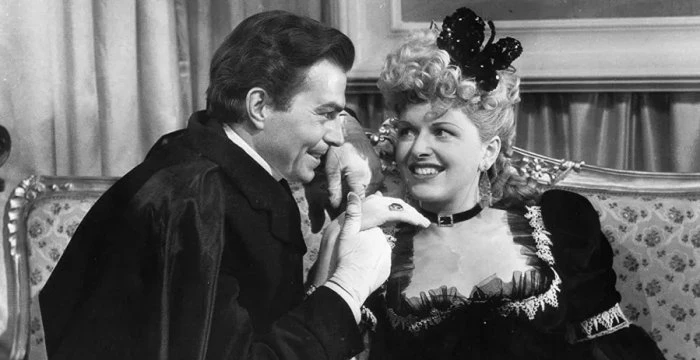
Sadleir, born in 1898, was from an educated Oxford family and was very interested in 19th Century literature, having amassed a large collection of Victorian novels including less well-known authors, by the time he came to write Fanny by Gaslight in 1940. The story was made into a film in 1944 by Gainsborough Films and is generally considered to be the best made and most convincing of the Gainsborough melodramas. Phyllis Calvert is Fanny, the illegitimate daughter of a nobleman and living with a jolly publican played by Wilf Lawson. Stewart Granger is her father’s secretary who falls in love with her. Jean Kent is the childhood friend who goes to James Mason, whose villainy affects all of them.
In 1981, the book was adapted for a four-part series for BBC television by Anthony Steven, a British television scriptwriter whose career spanned over three decades. Notable works include All Creatures Great and Small, The Prime of Miss Jean Brodie and The Forsyte Saga. In 1984, he wrote the script for the Doctor Who story The Twin Dilemma, the first to star Colin Baker as the Sixth Doctor, although that particular commission may be better left off his CV.

Fanny by Gaslight (a Victorian romance according to the Radio Times) was, due to its subject matter, shown after the 9pm watershed on BBC 1 commencing Thursday 24 September. The teenage Fanny was played by Sophie Kind with Chloe Salaman taking over as the character reached adulthood. Anthony Bate was Clive Seymour, Michael Culver was Lord Master Manderstoke, Stephen Yardley played ‘Duke’ Hopwood and Julia Chambers took the part of Lucy. The series failed to make a huge impression on the ratings – coming in bottom of the BBC’s top ten programmes for the second episode. But when you consider that the top BBC programme for that week was Dallas, you might perhaps wonder if the viewing public were all that discerning in 1981.
Sadleir’s extensive and diligent research had left him with an excess of material – enough for another book. So, during the war he set about writing a far more glamourless novel which described in stark detail how the innocent and naïve could unwittingly slip into a nightmare world where young girls, disinherited and abandoned, would become the prey of usurers and swindlers. Despite its dark narrative, Forlorn Sunset still offers a glimmer of hope and through it we learn how, during the late 1870s, a large number of reforming institutes began to appear. Although Fanny by Gaslight has had several adaptations, Forlorn Sunset has never been adapted for the screen, which is a shame because together these two novels are vital documents of historical value and combined would make an excellent mini-series.
Seen this show? How do you rate it?
Seen this show? How do you rate it?
Published on January 2nd, 2023. Written by Marc Saul for Television Heaven.


